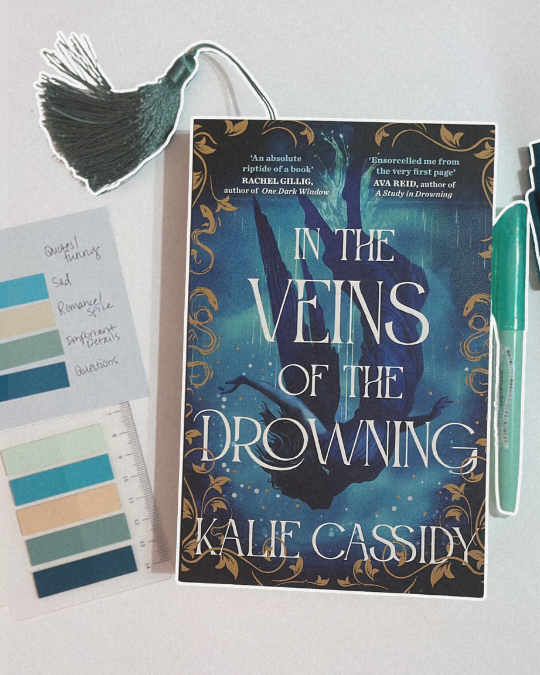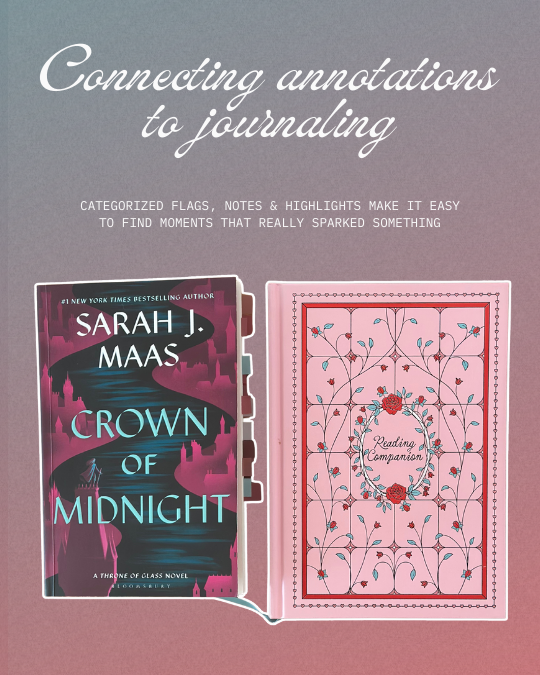From routine to ritual: making your reading journal habits last
Part 5 of the Reading Journal Series. Catch up on Part 1 here, Part 2 here, Part 3 here, and Part 4 here.
You've got your journal set up and your prompts ready. But here's the thing that makes the difference between a reading journal that gathers dust and one that becomes part of your life: turning routine into ritual.
What's the difference? A routine is functional. For example, you brush your teeth, you check your email, you do it because it needs to be done. A ritual has meaning. It's intentional. It signals to your brain that something important is happening here.
When you turn your reading journal practice into a ritual, you're not just recording what you read, you're creating sacred space for reflection, insight, and connection with stories that matter to you.
Simple reading rituals that work
Before you read
Keep your journal supplies in the same spot as your current book
Set a small intention: "I want to notice..." or "I'm reading this because..."
Put your phone somewhere else or on Do Not Disturb mode
While reading
Keep a pen with your book always
Use simple margin notes: "yes," "hmm," "wow," or just an asterisk
Flag pages with sticky tabs instead of stopping to write full thoughts
Photograph quotes you love (especially great for library books)
I pick up to 5 colored flags for each book to identify different categories. For example, when I read In the Veins of the Drowning, I chose flags for Quotes/Funny, Sad, Romance/Spice, Important Details, and Questions. My categories change with each book, though some stay consistent. I try to choose flag colors that match the book cover for fun! I also use highlighters for quotes or key details that really stand out, and a pen to underline important information or moments.
This system means I don't have to interrupt my reading flow to run over to Fable and share thoughts with my book club. I can flag everything in the moment, then go back at the end of a chapter or reading session without losing track of what was happening in the story.
After reading sessions
Spend 60 seconds flipping through what you marked
Write one sentence about how you're feeling about the book right now
Note the page you stopped on and why (tired? emotional? need to think?)
When you finish a book
Sit quietly for 2 minutes before moving on to anything else
Write three words that capture your experience
Choose one quote to copy by hand into your journal
Rate it now, then again in a week (your perspective might shift!)
Weekly and monthly rituals
Weekly check-ins (10 minutes)
Review your week's annotations and margin notes
Turn 2-3 flagged passages into fuller reflections
Notice what you've been drawn to reading lately
Monthly reviews (15 minutes)
List all the books you read that month
Identify patterns or themes across your reading
Celebrate wins: books finished, new genres tried, difficult topics tackled
Clean up your reading space
At the end of the month (or really, the first day of a new month), I head over to Fable and create my monthly wrap-up graphic with all the books I read. I share with the community my Favorite Reads (5 stars), Honorable Mentions, Most Disappointing Read(s), and the formats I read.
Then I hop over to my Reading Journal and update my quick reviews, which is essentially my reading log with title, author, page count, format, genre, start & end date, and overall rating. For my 5-star reads, I write more in-depth reviews using a variety of prompts and capturing my overall feelings about why those books really worked for me.
This is also when I take stock of anything out of the ordinary. Did I read a new genre? Find a new favorite author? Start a new series? I've also started tracking all of my books in a new Notion tracker I made. If you're interested in checking it out and customizing it for yourself, here's the link.
Rituals for real life situations
-
The 2-Minute Ritual: If you only have a sliver of time, don’t worry about writing a full reflection. After reading, jot down one sentence about what happened in the story and one about how you felt in response. This keeps your journal active without pressure, and over time, those quick notes add up to a surprisingly rich record of your reading life.
-
Color-code your supplies: When you’re juggling more than one book, your reflections can easily blur together. To avoid confusion, pick a system of colored pens, highlighters, or sticky tabs for each book. For example, blue for fantasy, pink for romance, yellow for nonfiction. When you open your journal later, the colors instantly remind you which notes belong where.
-
Lower the bar: During a slump, the last thing you need is more pressure. Lower the bar by writing down nothing more than “read three pages” or “reread a favorite scene.” Pair this with comfort reads or light genres. These tiny entries still count as showing up, and they keep the door open for when your reading energy naturally returns.
-
Photo + Voice memo combo: When you’re away from your usual setup, capturing notes can be difficult. Instead of lugging your full journal, snap a photo of a meaningful passage on your phone, then immediately record a quick voice memo with your thoughts. Later, you can transcribe or paste these into your journal, giving you a way to capture impressions on the move without breaking the flow of your trip.
Making annotation work as journaling
Here's the key insight: you don't always need to stop reading to journal. Annotation IS journaling—you're having a real-time conversation with the text. The formal reflection can come later.
Simple system:
Underline anything that makes you pause
Write brief margin reactions
Use tabs to flag different types of moments (beautiful language, big ideas, personal connections)
Weekly: spend 10 minutes expanding on your flagged moments
How my system connects to journaling
Those categorized flags and highlights I mentioned earlier make it easy to go back through the book and find moments that really sparked something for me. Sometimes I make notes in the margin too, which helps prompt me when I'm journaling about my reading experience for that book. Instead of trying to remember what moved me weeks later, I can flip to my flagged pages and immediately reconnect with those moments that made me pause.
Start with one
Pick one ritual from this list that feels doable right now:
Keep a pen with your book
Write one word after each reading session
Always read in the same spot
Do a weekly 5-minute annotation review
Do that for two weeks or until it feels automatic. Then add something else if you want to.
I can honestly tell you that this is still something I'm making into a ritual. I try to spend an hour early morning on the weekend to update my journal from the previous week and plan ahead what I'll be reading the coming week. I proactively look for journaling prompts or book review questions to use, which helps me read more thoughtfully—really paying attention to descriptions, characters, themes, and asking myself questions or forming theories.
It has made my reading experience more enjoyable, and I've intentionally started to choose books that aren't just mindless (though there's a place for those too! Usually as a palate cleanser for me between series or high fantasy novels). I approach my life with a bit more main character energy, and try to find or create a spark of fantasy in the mundane.
Your complete reading journal system
Over this series, we've built a complete approach:
Understanding your reader type (Trendsetter, Empath, Escapist, or Philosopher)
Choosing a journal format that fits your life
Using prompts that spark real insights
Creating sustainable rituals that make it all feel special
The goal was never perfection, it was intention. Paying attention to what moves you, noticing patterns in what you love, and creating a record of your journey through stories.
Your reading journal isn’t about being perfect or proving anything. It’s about showing up, slowing down, and taking in what you read. When you are purposeful about becoming a reflective reader, you make your reading more enjoyable and more meaningful.
This post contains affiliate links, which means I may earn a small commission if you make a purchase through them. As an Amazon Associate, I earn from qualifying purchases.




